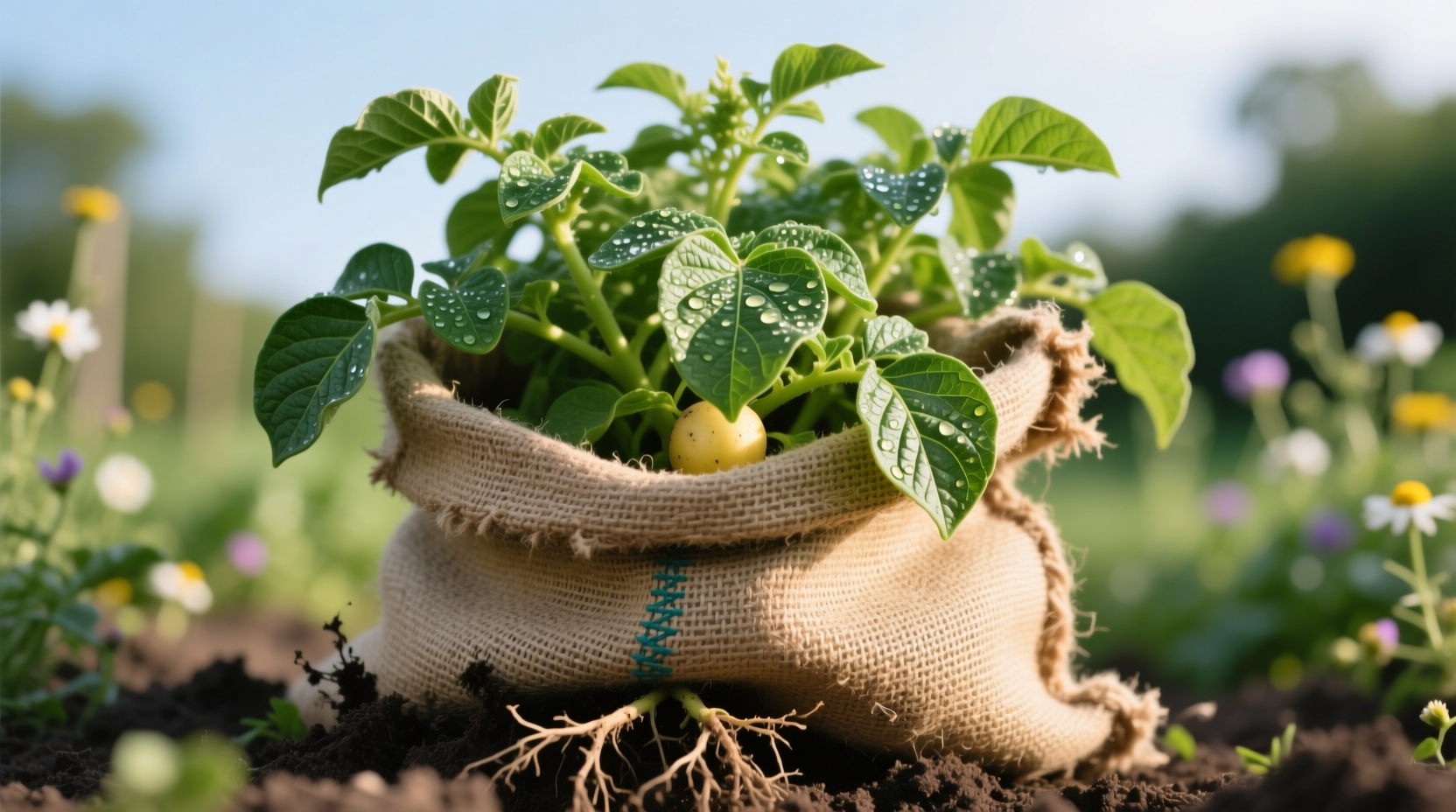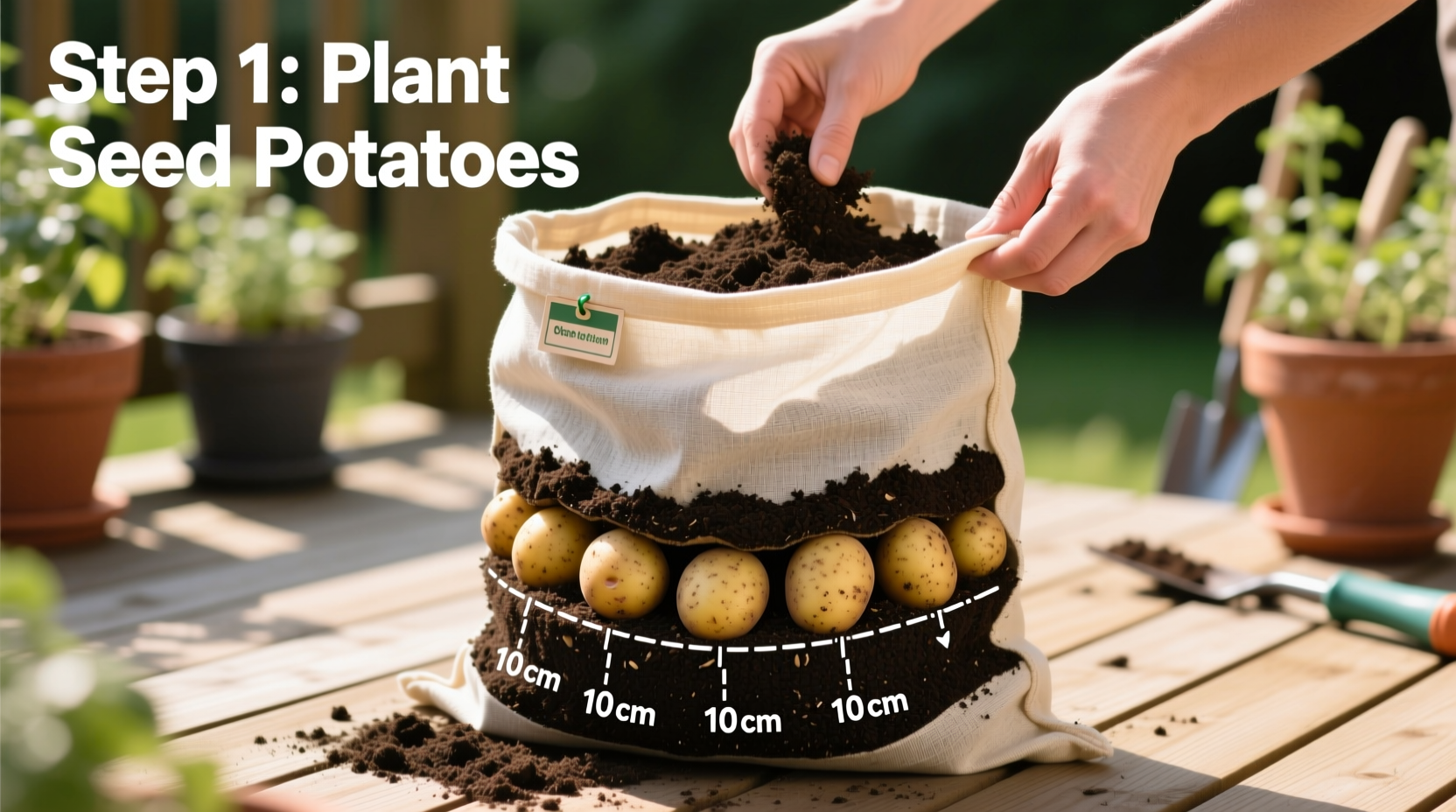Grow perfect potatoes in bags with this proven method: Start with certified seed potatoes, use a 15-20 gallon fabric bag filled with 4" of soil mix, plant 2-3 seed pieces 4" deep, and add 4" of soil weekly as plants grow. Water consistently and harvest 70-120 days after planting when foliage yellows. This space-saving technique yields 5-10 pounds per bag with minimal pests and easy harvesting.
Why Potato Bag Gardening Beats Traditional Methods
Container potato growing solves major gardening challenges for urban dwellers and beginners. Unlike traditional in-ground methods requiring extensive digging, potato bags eliminate back-breaking labor while preventing common soil-borne diseases. The University of Minnesota Extension confirms container gardening reduces pest pressure by 60% compared to field cultivation, making it ideal for small-space growers.
Your Potato Bag Gardening Starter Kit
Before planting, gather these essential items:
- Fabric grow bags (15-20 gallon size with drainage holes)
- Certified disease-free seed potatoes (never use grocery store potatoes)
- Soil mix: 60% potting soil, 30% compost, 10% perlite
- Balanced organic fertilizer (4-4-4 NPK)
- Watering can with gentle rose attachment
Step-by-Step Potato Bag Planting Process
Follow this professional grower's timeline for maximum yields:
| Week | Action Required | Visual Indicator |
|---|---|---|
| 0 | Fill bag with 4" soil, plant 2-3 seed pieces 4" deep | "Eyes" facing upward |
| 2-3 | Add 4" soil when stems reach 6-8" | "Hilling" process begins |
| 5-6 | Repeat hilling, maintain 2" below bag rim | Flowers appear |
| 10-12 | Stop watering, wait for foliage yellowing | Harvest readiness signal |
Choosing the Best Potato Varieties for Bags
Not all potatoes thrive in containers. Early varieties mature faster in confined spaces while fingerlings adapt well to vertical growth. The Cornell University Vegetable Program recommends these proven performers:
- Yukon Gold - 70-90 days, buttery flavor, excellent container performer
- Red Norland - 75-85 days, smooth skin, resists scab in containers
- French Fingerling - 90-100 days, high-value gourmet option
Watering Wisdom for Healthy Tubers
Potato bags demand precise moisture management. During tuber formation (weeks 5-8), inconsistent watering causes cracking and deformities. Maintain "consistently moist but not soggy" conditions by:
- Watering early morning to reduce evaporation
- Checking moisture depth with finger test (top 1" dry = time to water)
- Using drip irrigation for consistent delivery

Avoiding Common Container Growing Mistakes
Even experienced gardeners encounter these preventable issues:
- Overcrowding: Planting more than 3 seed pieces reduces yields by 40% (Texas A&M AgriLife Research)
- Poor drainage: Plastic containers cause root rot; always use breathable fabric bags
- Insufficient hilling: Exposed tubers turn green and toxic from sun exposure
Harvesting Your Bag-Grown Potatoes
Timing your harvest correctly maximizes storage life. For new potatoes, harvest 7-8 weeks after planting when flowers appear. For storage potatoes, wait 2-3 weeks after foliage dies back. Simply tip the bag and collect your harvest - no digging required! The USDA notes container-grown potatoes typically have 25% fewer bruising injuries compared to dug crops.
Seasonal Considerations for Different Climates
Potato bag gardening adapts to various environments with these adjustments:
- Cold climates: Start indoors 2 weeks before last frost, use black bags for warmth
- Hot climates: Move bags to partial shade after noon, mulch top layer
- Humid regions: Increase spacing between bags for airflow, prevent blight











 浙公网安备
33010002000092号
浙公网安备
33010002000092号 浙B2-20120091-4
浙B2-20120091-4